Cable channel for electrical wiring: types of structures and their classification
The main purpose of the cable channels is to protect the wiring from mechanical damage, to protect against fire in the event of a power outage. At first glance, the definition of the required type of cable support systems should not cause difficulties. But when choosing, you can get lost from the widest assortment. Do you agree?
We will tell you how to choose the right cable channel for wiring, taking into account the complexity of the wiring diagram and operating conditions. In the article we presented, the most popular varieties are described in detail, their technical characteristics are given. Using our tips, you will not be mistaken in finding the best option.
The content of the article:
How to choose a cable channel for wiring?
Even an insignificant, at first glance, characteristic of the electrical installation box may turn out to be a key factor in choosing the necessary option.
So, what properties can be considered when buying a product:
- Material. Pay attention to safety, durability, level of protection in case of possible fire.
- Type of construction. Cable channels for wiring can be produced in the form of smooth or corrugated pipes, tracks, trays, etc.
- Application specifics. The characteristics of the systems used for industrial premises, private houses or equipment can vary significantly.
For example, to the fire safety of the cable box used for installation electrical wiring in wooden houses, more stringent requirements are imposed, and for wiring used in movable mechanisms, static structures will not work.
In addition, pay attention to color.This factor is relevant in the case of arranging open wiring, in which the elements of the cable channel are visible and must meet aesthetic requirements.
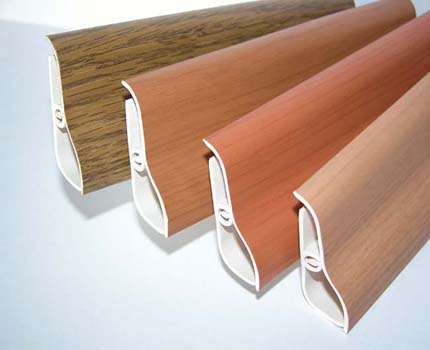
Materials for cable support systems
All materials used in the manufacture of electrical boxes meet the basic requirements for safety, strength and aesthetics. But differences still exist, and they have different effects on the quality and operational properties of cable channels, their cost.
Plastic Electrical Boxes
Plastic products are designed for laying open type electric lines, both low-current and power. They can be used for wiring in residential, office, industrial buildings, administrative institutions.
They are made from PVC-based compositions with special additives that provide products with plasticity, resistance to various negative factors - the effects of aggressive chemicals and ultraviolet radiation.
PVC products can be used in the temperature range from -32 ° C to +90 ° C and can be mounted at temperatures from -15 ° C to +60 ° C.
Electro-boxes made of plastic are not subject to corrosion, are easily mounted and have a simple fastening system. They are in a low price category, due to this they deserve the greatest popularity. The shape can be rectangular (found most often), triangular, flat, with a circular cross section.

The material from which the cable channel is made is self-extinguishing. In the event of a short circuit using an electrical box, it is possible to minimize the risk of fire.
Products from aluminum and galvanized steel
Aluminum cable systems serve as protection against electromagnetic interference. Used for open wiring in premises for various purposes - in medical institutions, industrial enterprises, in offices.
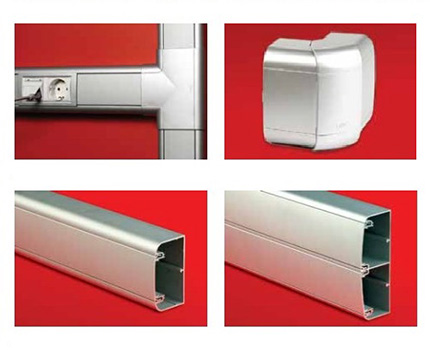
They are made from anodized aluminum. The material helps to ensure the stable operation of telecommunication systems - it prevents the occurrence of interference, protecting against electromagnetic interference.
In addition, it is resistant to ultraviolet radiation, high temperatures. Accessories for aluminum boxes are made of painted ABS plastic or polycarbonate.
Aluminum products have a strength of up to 20 J and a long service life. This is an especially important quality for floor and industrial electrical boxes.
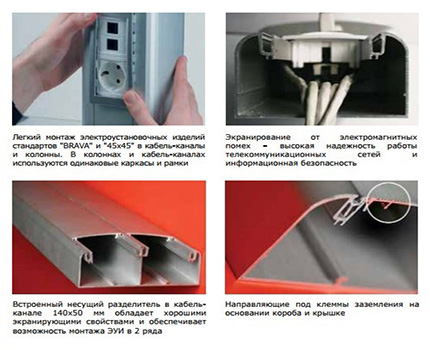
The wiring device with the laying of lines in aluminum cable channels is made in the following order:
In order to avoid problems during the construction of the cable channel channel, all parts should be bought with one logo. Products from different manufacturers may have millimeter deviations. However, because of them, the assembled system may look messy and will not provide sufficient protection against external influences.
Types of cable channels: classification
It is customary to classify various types of cable channels intended for laying electrical wiring precisely on the basis of structural features. They, in turn, depend on the place and operating conditions.
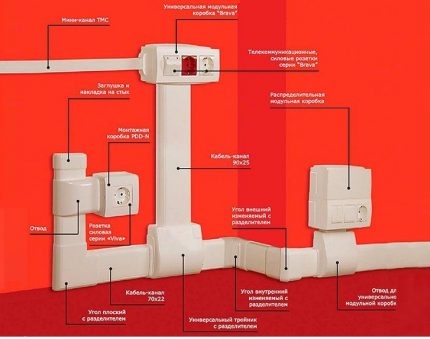
Trunk electrical channels
To protect the electricity network during the construction and reconstruction of buildings for various purposes, trunk cable channels are used. They differ in a large assortment of sizes and can be used as electrical installation lines.
In the latter case, complemented by a wide range overhead wiring accessories different manufacturers. Typical sizes allow you to carry out projects of any complexity.
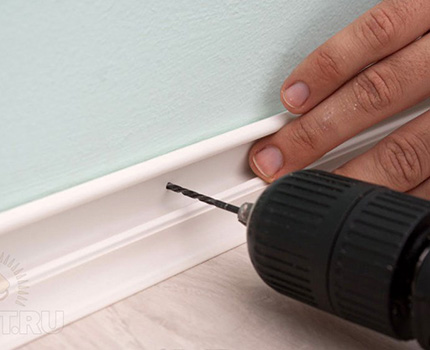
The complete set of the system includes boxes 2 meters long and various accessories that serve to connect the channels on straight planes, at external and internal corners, for T-shaped joints.
Cable duct systems that are planned to be used as wiring systems are complemented junction boxes, framework-calipers for the installation of sockets, switches, etc.
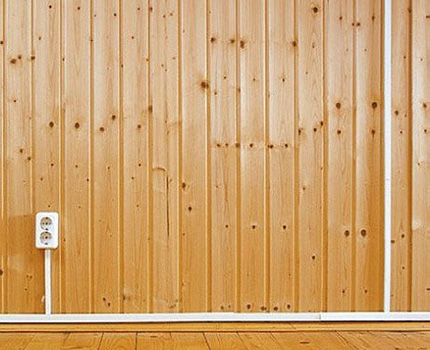
Skirting and floor cable ducts
Floor cable ducts are used in rooms with a large area, as well as where wiring passes under the floor. They help in organizing a functional workplace.
Floor constructions have a streamlined shape and are characterized by high compressive strength. To connect wiring products, columns, turret modules are used, which can be expanded, installed one on top of the other.
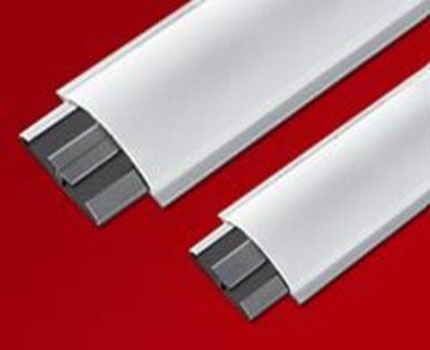
Floor structures are subject to special strength requirements. The manufacturer achieves increased resistance to mechanical stress through the use of more durable materials, such as aluminum.
The design of plastic products is strengthened with the help of partitions, which simultaneously serve as forced dividers for different types of wiring.
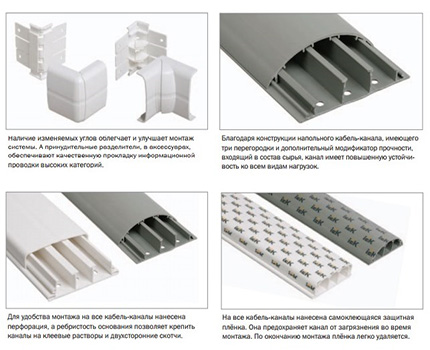
Skirting channels are used as skirting boards and are mounted around the entire perimeter of the room. To branch off the floor or wall channel from the baseboard, special adapters are used that can simultaneously serve as a junction box.
Accessories and additional features
For ease of installation and to improve the appearance, manufacturers are constantly working on improving cable channels. Sockets and switches can be installed above the boxes or in the box itself.
Multimodular boxes and caliper frames allow you to install several wiring accessories side by side. Built-in dividers in boxes and accessories prevent cable breaks in corners, and create two independent channels - for power and telecommunication wiring.
Some models of electrical boxes have a double lock, with the help of which the lid with the box is more tightly connected. This allows installation on the ceiling, as well as more tightly lay the cable inside the channel, place a corrugated pipe next to it.
In a box with a tight lid, up to 100% of the usable area is used, while systems with a single lock can be filled no more than 70%. Variable external and internal angular connectors make it possible to change the degree of angle, they are available for all sizes of boxes.
To hide the gap between the duct and the wall and to prevent dust accumulation in the duct itself, a soft seal is used, which the manufacturer fastens on the base of the duct and accessories.
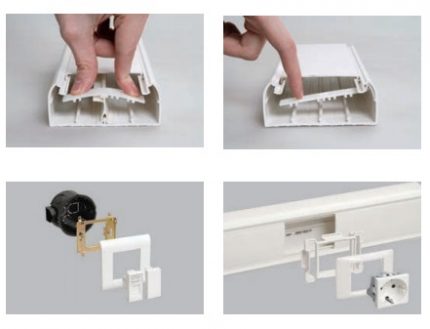
Perforated plastic box
The purpose of the perforated duct is to be installed in power distribution cabinets. It is well ventilated, has a small weight, allows for accurate and aesthetic wiring. Inexpensive design is often used where the appearance of the product does not play a role.
The channels have teeth that can be removed in the right place if necessary, for example, when you insert the wire into a branch, socket or switch. The perforation pitch is designed to match the pitch of the contact clamps of modular equipment.
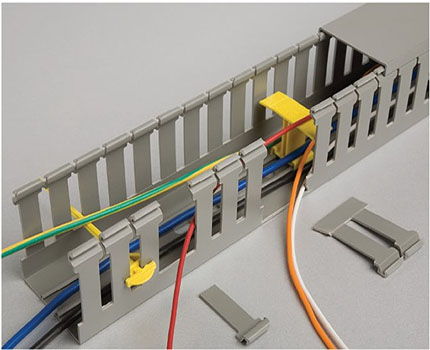
Flexible cable systems
Flexible cable channels can be produced in the form of chains - multisectional structures that bend in one plane along the entire length. The individual elements of the truck are interconnected by an articulated hitch. They are made of aluminum, plastic, nylon, steel and can vary in height, length and pitch.
Tracks serve to prevent mechanical damage to power, signal cables, their getting into moving parts of mechanisms. They also protect against dust and dirt, serve to lay the wiring and cable to the required distance.

Cable tracks can be open or closed. Closed cable channels for electrical wiring are used if it is necessary to provide high-quality protection against ingress of dust and foreign objects into the channel. Open energy chains are installed in those cases where it is necessary to give preference to the ease and simplicity of installation.
One of the flexible systems is also a cable channel with the function of three-dimensional circular rotation. Such channels are used to create robots and robotic mechanisms. Their design consists of separate elements, each of which, if the need arises, can be added or removed.
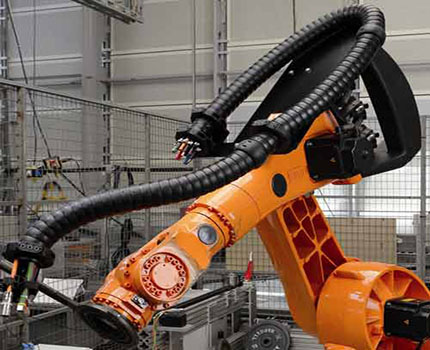
Pipes for wiring
For the installation of electric wires, both ordinary PVC pipes and products created specifically for electric networks are used.When choosing a rigid or flexible pipe, take into account where the cable will be laid, its operating conditions, the need for protection from ultraviolet rays, aesthetic preferences.
Smooth PVC pipes
PVC pipes are used for the installation of open type wiring indoors or outdoors. They protect the wiring from damage, contact with moisture, and are used to increase fire safety. With the help of pipes used as cable channels for electrical wiring, the most difficult installation tasks are solved.

Corrugated and reinforced pipes
Like other cable support systems, electrical corrugated pipes designed to protect against fire, moisture and dust, mechanical damage to the wiring.
Thanks to their flexibility, they are easy to install and do not require the use of additional accessories. They are used for laying concealed wiring for power and low-current lines.
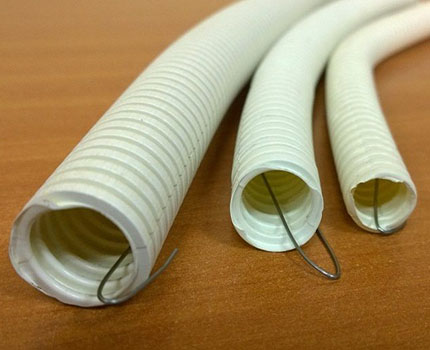
The pipe reinforced with PVC is used for laying power lines and data cables of hidden and open type. It can be used in the construction of communications inside the building and on the street. Compared with a regular corrugated pipe, the reinforced one is more durable and provides better protection against dust and moisture.
It is made of a reinforcing spiral from impact-resistant PVC, and a connecting, covering spiral, plastic PVC. Since the reinforced pipe is able to withstand dynamic loads, it is often used in mechanical engineering.
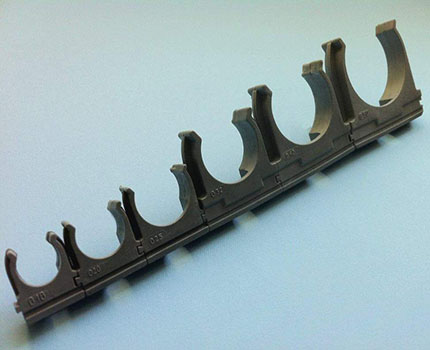
For quick and easy connection of a rigid smooth pipe and a flexible reinforced PVC pipe, various couplings are available. They can be used for rectilinear connection, connection in different planes and at different angles. Thanks to the couplings, you can easily connect one pipe to another, to the box, to connect pipes of different diameters to each other.
The conditions for using different types of accessories may vary: some are used in indoor areas protected from moisture, others can be mounted outdoors, in humid and dusty rooms, have protection against moisture penetration during temporary immersion in water, strong exposure to a stream of water.
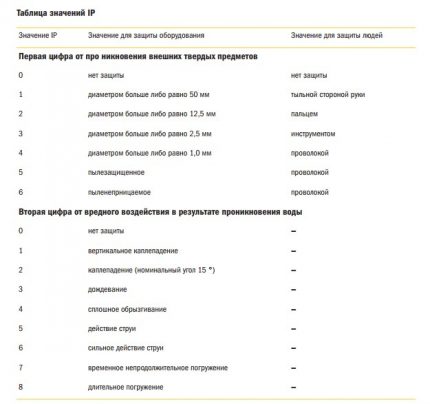
The process of installing electrical wiring in a corrugated pipe, which is produced purposefully to protect power lines, is as follows:
After completing the pulling of the electric cable through the corrugated pipe, we proceed to the installation of the wiring:
Hose for cable protection
Metal leaky sleeve is made of galvanized steel tape. It is used to protect the wiring from excesses and damage of a mechanical nature, protects against fire. Serves as a screen from electromagnetic interference.
A metal hose is recommended for wiring on flammable surfaces, including wood. The maximum operating temperature at which the cable channel +100 ° C can be used.
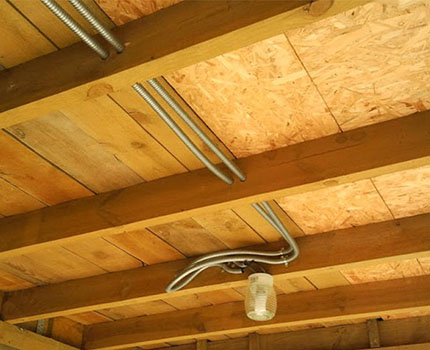
Hanging trays for cable systems
Metal cable trays can be used for open routing along the elements of the building - the ceiling, walls, floor. Their installation facilitates access to the electrical network during its maintenance and modernization.
They are used inside commercial, office, industrial premises, in residential buildings and in the open air. There are also tray-shaped systems made of plastic.
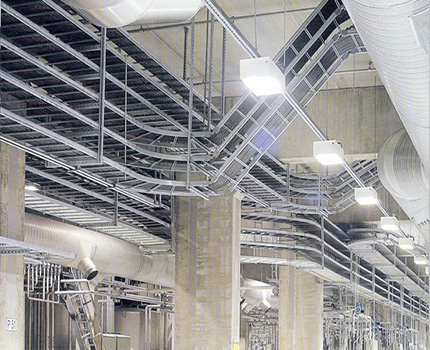
Rolling metal trays
Perforated and non-perforated trays are manufactured for installation and protection of wiring. Hole systems contribute to better ventilation and prevent overheating of wires.
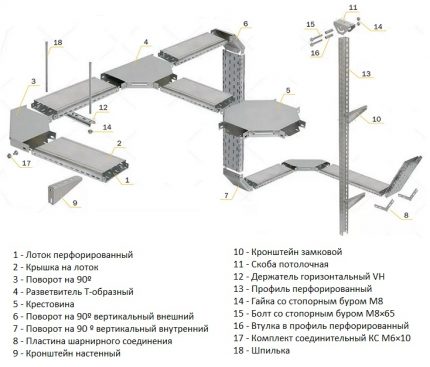
If desired, the trays are equipped with lids that are fixed with a simple press and do not require additional latches. The lock on the lid is firmly held on the tray even in the case of vertical mounting. The connection of the trays is carried out using the provided connectors "mom-dad" or connecting plate.

Wire trays for production lines
The material of production, installation and the principle of using wire trays is slightly different from metal tray systems. The main difference between them is that the wire structures are folded with a minimum number of accessories and contribute to greater ventilation of the cable route.
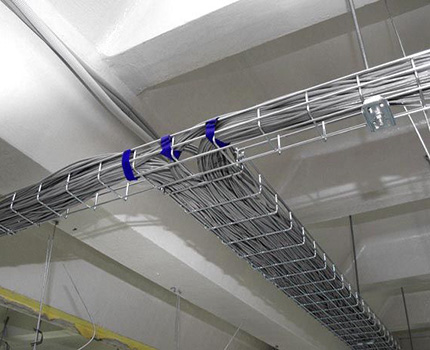
For mounting trays, use a special connection kit. It allows you to more securely fasten the elements of the cable system with each other. A set of wire suspension systems may include a cover that reliably holds wiring inside the cable channel, even in the case of a vertical arrangement of the route.
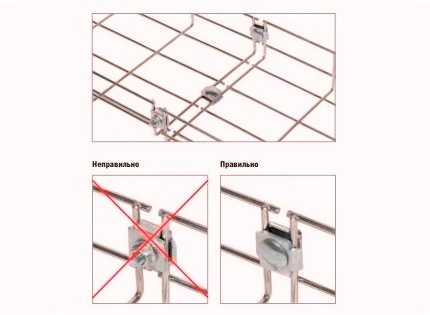
Wires are laid in a box and secured with clamps. The design of the wire trays can be quite roomy. This characteristic is especially relevant when installing the power grid in industrial buildings, warehouses.
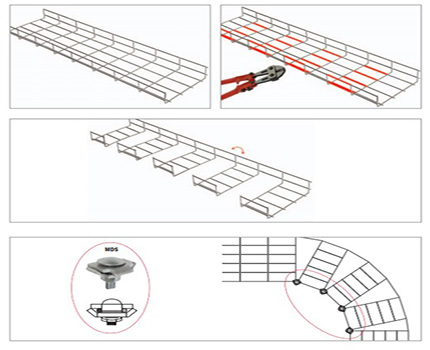
Conclusions and useful video on the topic
Video # 1. What are the types of cable channels:
Video # 2. Installation of a skirting cable channel for electrical wiring:
Video # 3. Using corrugated pipe to protect wiring:
In the case of open wiring, in which the potential source of ignition remains not localized, the main criterion for choosing among many types of cable channels for electrical wiring should be safety.
That is why it is necessary to carefully study the technical characteristics and operating conditions of the products. Better yet, consult an electrician.
Please write comments in the block below. Tell us about how you independently laid the wiring using cable channels. Perhaps you have valuable information that is worth sharing with site visitors?

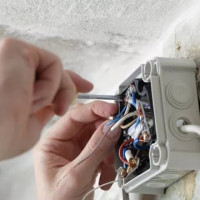 Junction box for indoor and outdoor wiring: types, classification + installation instructions
Junction box for indoor and outdoor wiring: types, classification + installation instructions 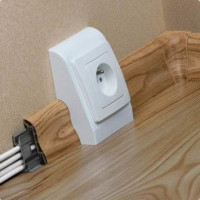 Installation of open wiring: a review of the technology of work + analysis of the main errors
Installation of open wiring: a review of the technology of work + analysis of the main errors 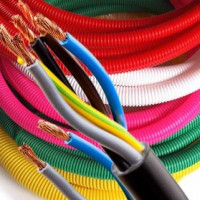 Corrugation for electrical wiring: how to choose and install a corrugated sleeve for cable
Corrugation for electrical wiring: how to choose and install a corrugated sleeve for cable 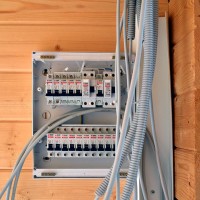 Wiring in the apartment: an overview of the main schemes and the procedure for performing work
Wiring in the apartment: an overview of the main schemes and the procedure for performing work 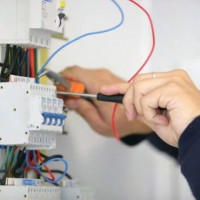 Wiring diagram in the apartment: electrical wiring for different rooms
Wiring diagram in the apartment: electrical wiring for different rooms 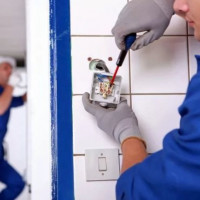 DIY wiring: how to properly perform electrical work
DIY wiring: how to properly perform electrical work  How much does it cost to connect gas to a private house: the price of organizing gas supply
How much does it cost to connect gas to a private house: the price of organizing gas supply  The best washing machines with dryer: model rating and customer tips
The best washing machines with dryer: model rating and customer tips  What is the color temperature of light and the nuances of choosing the temperature of the lamps to suit your needs
What is the color temperature of light and the nuances of choosing the temperature of the lamps to suit your needs  Replacement of a geyser in an apartment: replacement paperwork + basic norms and requirements
Replacement of a geyser in an apartment: replacement paperwork + basic norms and requirements
The materials from which the cable channels are made are durable and non-combustible, regardless of which option is used, whether it is plastic or metal. The choice is simply huge. The main thing is to decide what you need.Modern decorative cable channels allow you to conduct external wiring throughout the apartment, which will fit into any interior picture. If you want to lay the cable on the street - at your disposal are durable, sealed boxes and corrugations for any placement: even underground, even under water.
I agree with the previous opinion, but only a little I will make small amendments. Cable channels of various systems are designed for a certain power of current-carrying wires and this must be taken into account during its installation and not laid in any way intended for laying low-voltage wires and antenna cables wires with high or ordinary mains voltage.
Good afternoon, Artyom.
You will have to adjust your comment too - structurally cable channels limit the cross-sections of the used wires. In other words, you can’t put a cable, for example, with a 3x240 cross-section into apartment cable channels, which are considered in the article.
Relatively high, low, other voltages mentioned by you - they do not use such categories as “Electrical Installation Rules”. All electric power industry, electricians are guided by the ranges: electrical installations up to 1000 V; electrical installations over 1000 V.
Regarding the laying of wires of different voltages in the cable channels - see the PUE section "2.1 Wiring" (to facilitate the search - attached a screenshot).
Please note that power engineers are guided by their own rules, signalmen, internet users and others - by their own. No one confuses their postings with “strangers”.
I am quite happy with the standard plastic cable channels. I have trunk lines everywhere. Now there is a rather wide choice, you can take plain white, or you can try to match the color of the walls so that it is striking to a minimum. In cases where there is an opportunity, I try to do without them at all, if you can hide the cable behind the furniture or under the windowsill.